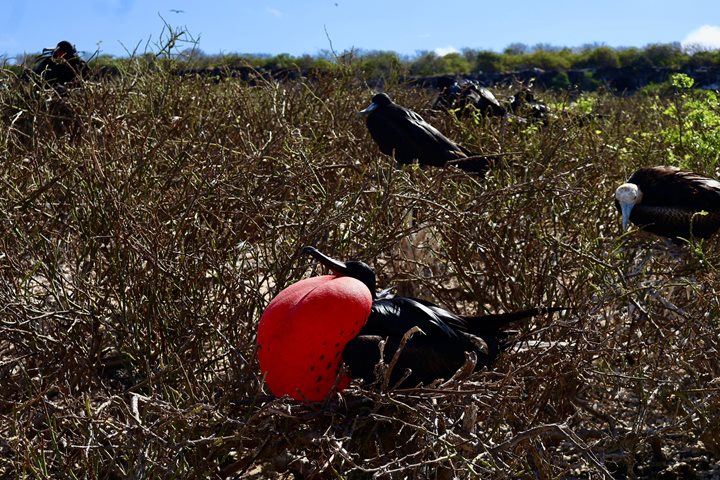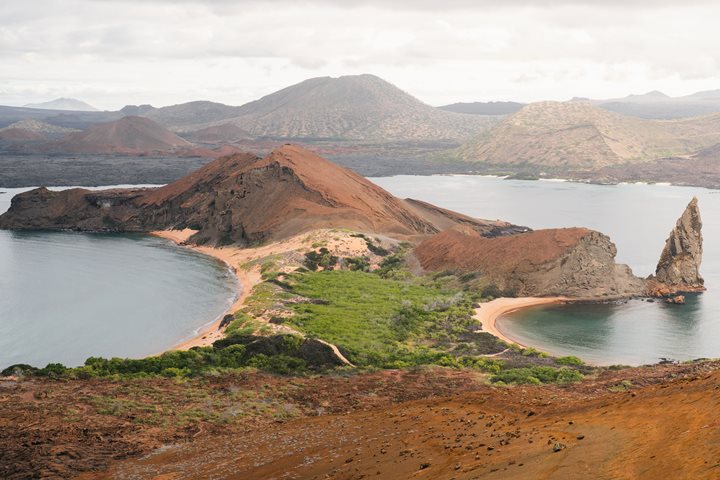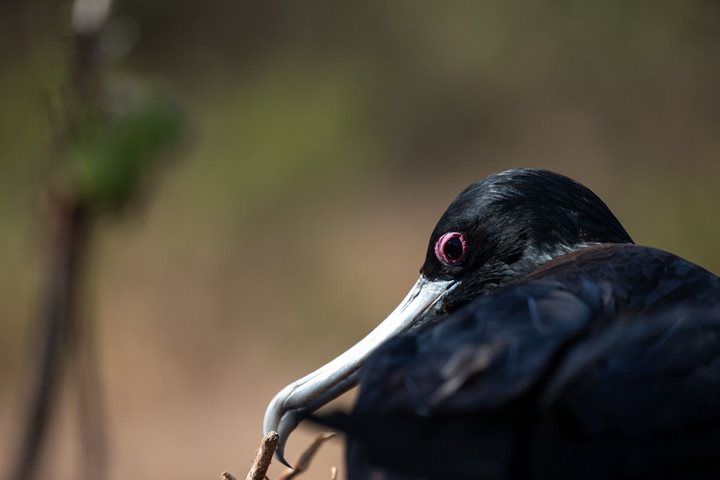Matted sunlight pokes through the clouds as we awaken at our anchorage between Baltra and North Seymour Islands. As we land on this unassuming flat island, we do not expect the abundance of life that we encounter. Due to the central position in the archipelago this island and surrounding waters has an abundance of food for the residents a good percentage of the year. This is one of the few places we can encounter the magnificent and great frigate birds breeding throughout the year with the males using their inflated gular sacs to attract possible mates. As we land we are greeted by land iguanas, frigate birds, marine iguanas, blue-footed boobies, and small lava lizards fliting about. All were taken aback by the abundance of life on this small barren island. Navigating into the afternoon, we arrive to Rabida, which in its dark red coloration we find another unique environment. The marine habitat is explored in all its detail with white tipped reef sharks, Pacific green sea turtles, and Galapagos sea lions making their appearance. The sun continues to try to break the overcast as it falls into the horizon over Isabela Island.
6/13/2025
Read
National Geographic Endeavour II
Genovesa Island
We started the day with excitement as we landed on the beautiful, pristine coast of Isla Genovesa - a true birder’s dream. Along the sandy beaches and steep cliffs of Darwin Bay, we were surrounded by an incredible array of birdlife. Frigatebirds soared closely overhead with their red pouches on full display, while Nazca and blue-footed boobies nested along the rocky ledges. Swallow-tailed gulls called out as we walked past. In the distance, we saw the stoic and elusive short-eared owl. The island was alive with color, sound, and constant movement. Between our excursions to Isla Genovesa, we snorkeled near Prince Philip’s Steps and discovered a vibrant world beneath the waves. Schools of fish swirled around us, a fur seal turned in the water as if dancing on cue, and sea lions relaxed nearby. As our last snorkeling adventure came to a close, we spotted a sea turtle resting calmly in a crevice. As the sun retreated into the sky on our last return to National Geographic Endeavor II, we reflected on the sheer magnitude of what we witnessed on our last full day. Isla Genovesa, like the other islands, gave us a connection to a sacred world. The harmony between land, sea, and sky reminded us how deeply interconnected, vital, and fragile these ecosystems are. Watching birds tend to their nests and marine life swim effortlessly, we were struck by how little space there is between wonder and reverence. We recognized that our journey wasn’t just about observing unique wildlife, it was about feeling part of something grander and beautifully ancient.







